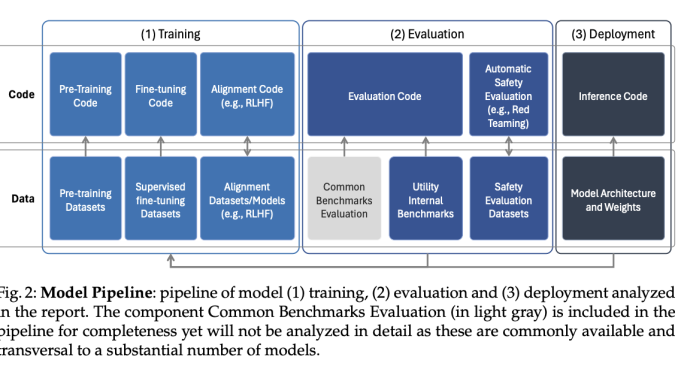
Generative AI (Gen AI), capable of producing robust content based on input, is poised to impact various sectors like science, economy, education, and the environment. Extensive socio-technical research aims to understand the broad implications, acknowledging risks and opportunities. A debate surrounds the openness of Gen AI models, with some advocating for open release to benefit all. Regulatory developments, notably the EU AI Act and US Executive Order, highlight the need to assess risks and opportunities while questions regarding governance and systemic risks persist.
The discourse on open-sourcing generative AI is complex, examining broader impacts and specific debates. The research delves into benefits and risks across domains like science and education alongside implications of capability shifts. Discussions center on categorizing systems based on disclosure levels and addressing AI safety. While closed-source models still outperform open ones, the gap is narrowing.
Researchers from the University of Oxford, University of California, Berkeley, and other institutes advocate for responsible development and deployment of open-source Gen AI, drawing parallels with the success of open source in traditional software. The study delineates the development stages of Gen AI models and presents a taxonomy for openness, classifying models into fully closed, semi-open, and fully open categories. The discussion evaluates risks and opportunities in near to mid-term and long-term stages, emphasizing benefits like research empowerment and technical alignment while addressing existential and non-existential risks. Recommendations for policymakers and developers are provided to balance risks and opportunities, promoting appropriate legislation without stifling open-source development.
Researchers introduced a classification scale for evaluating the openness of components in generative AI pipelines. Components are categorized as fully closed, semi-open, or fully open based on accessibility. A point-based system evaluates licenses, distinguishing between highly restrictive and restriction-free ones. The analysis applies this framework to 45 high-impact Large Language Models (LLMs), revealing a balance between open and closed source components. The findings highlight the need for responsible open-source development to utilize advantages and mitigate risks effectively. Also, they emphasized the importance of reproducibility in model development.
The study adopts a socio-technical approach, contrasting the impacts of standalone open-source Generative AI models with closed ones across key areas. Researchers conduct a contrastive analysis, followed by a holistic examination of relative risks. The near to mid-term phase is defined, excluding dramatic capability changes. Challenges in assessing risks and benefits are discussed alongside potential solutions. The socio-technical analysis considers research, innovation, development, safety, security, equity, access, usability, and broader societal aspects. Open source’s benefits include advancing research, affordability, flexibility, and empowerment of developers, fostering innovation.
Researchers also discussed about Existential Risk and the Open Sourcing of AGI, The concept of existential risk in AI refers to the potential for AGI to cause human extinction or irreversible global catastrophe. Prior work suggests various causes, including automated warfare, bioterrorism, rogue AI agents, and cyber warfare. The speculative nature of AGI makes it impossible to prove or disprove its probability of causing human extinction. While existential risk has garnered significant attention, some experts have revised their views on its likelihood. They explore how open-sourcing AI could influence AGI’s existential risk in different development scenarios.
To recapitulate, The narrowing performance gap between closed-source and open-source Gen AI models fuels debates on optimal practices for open releases to mitigate risks. Discussions focus on categorizing systems based on disclosure willingness and differentiating them for regulatory clarity. Concerns about AI safety intensify, emphasizing the need for open models to mitigate centralization risks while acknowledging increased misuse potential. The authors propose a robust taxonomy and offer nuanced insights into near-, mid-, and long-term risks, extending prior research with comprehensive recommendations for developers.
Check out the Paper. All credit for this research goes to the researchers of this project. Also, don’t forget to follow us on Twitter. Join our Telegram Channel, Discord Channel, and LinkedIn Group.
If you like our work, you will love our newsletter..
Don’t Forget to join our 42k+ ML SubReddit
![]()
Asjad is an intern consultant at Marktechpost. He is persuing B.Tech in mechanical engineering at the Indian Institute of Technology, Kharagpur. Asjad is a Machine learning and deep learning enthusiast who is always researching the applications of machine learning in healthcare.





Be the first to comment